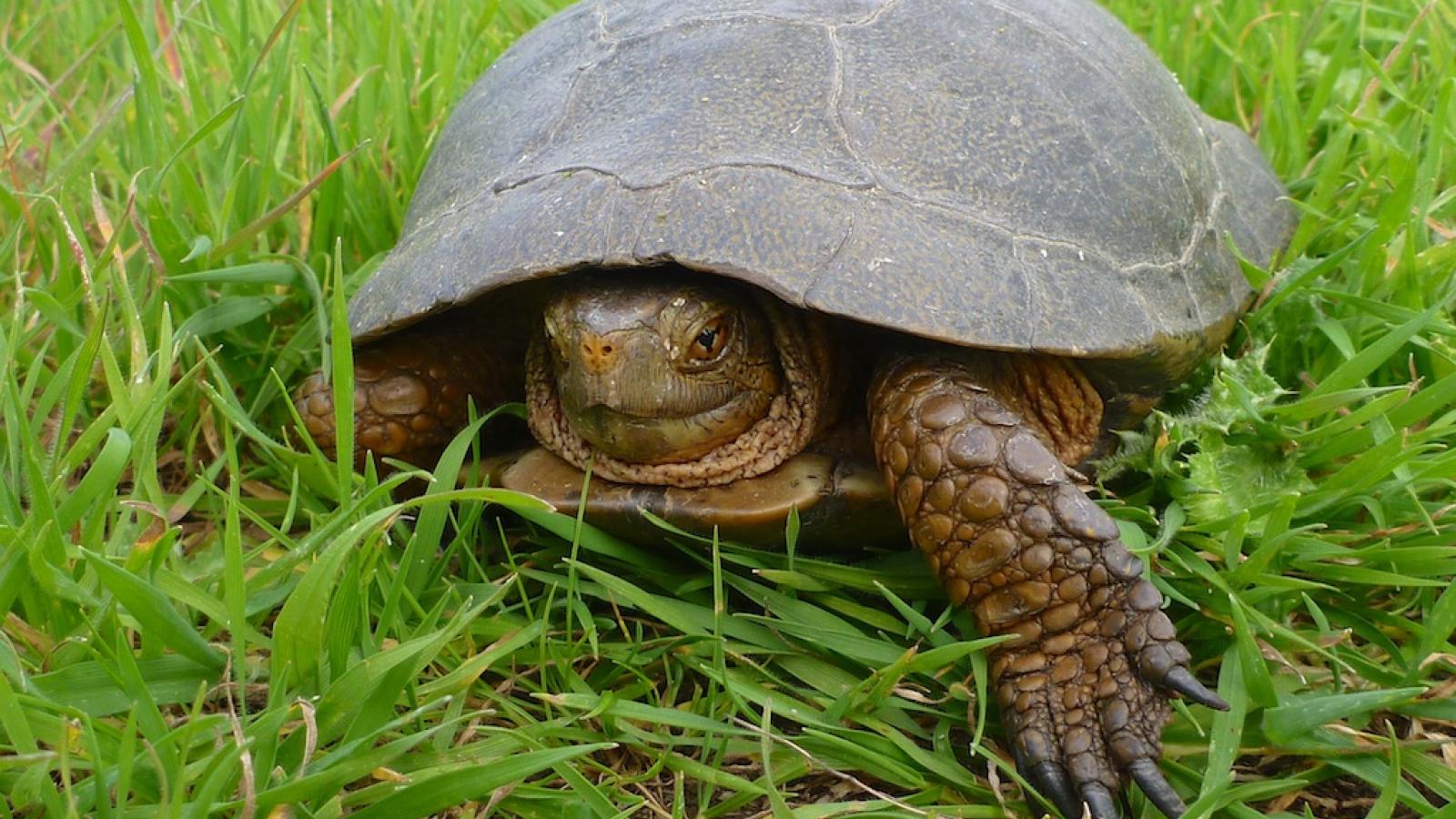Among all of California’s incredible biodiversity, there is just one native freshwater turtle: the western pond turtle. For millennia, these long-lived reptiles have inhabited West Coast streams, ponds, lakes and wetlands. Their population is dwindling as a result of habitat loss, impacts from invasive species, a shell fungal pathogen and other threats, prompting a new recommendation from the U.S. Fish and Wildlife Service that their status be elevated to a federally threatened species.
These turtles, though becoming rare, are abundant in the aptly named Turtle Ponds in Midpen’s La Honda Creek Open Space Preserve. This fact drove our recent work to engineer and rebuild the berm and spillway on the larger of this pair of human-made ponds, ensuring they remain viable habitat for western pond turtles and a host of other native wildlife.
“These ponds are gems in the western pond turtle world because of the high numbers of healthy turtles at one site. That puts Midpen in a rare and valuable position to safeguard this population,” said Maria Wojakowski, who received her doctorate from Stanford University and studied western pond turtles on Midpen lands as part of her dissertation. “There is still so much we can learn from the western pond turtles in La Honda Creek Preserve that can help the whole species.”
Western pond turtles bask at the surface of the Turtle Ponds, often with just their triangular noses above the water. The grassy south-facing slope near the larger pond’s outlet is dotted with shallow holes and broken turtle eggshells, evidence that the turtles successfully breed here.

Western Pond Turtle
(Actinemys marmorata)
Native species
- Mottled dark markings on the head without stripes
- Rear edge of shell is smooth, not serrated, not marked with red
- A pattern of spots or lines radiates from the centers of the scutes on the shell.
- There is no red coloring on the shell or plastron.
In the late spring and early summer, females leave the water in search of suitable sites to dig a nest, lay their eggs and cover them with soil and vegetation to incubate underground.
“These ponds are surrounded by excellent habitat that resident turtles, frogs and snakes all need to complete their lifecycles, and conservation grazing assists with that,” Midpen Resource Management Specialist Matt Sharp Chaney said.
The ponds were created decades ago by local ranchers needing water for their cattle, and cattle are still on the land now as part of Midpen’s Conservation Grazing Program, which continues the long tradition of Coastside ranching in alignment with our coastal mission while also helping Midpen achieve conservation goals. Cattle grazing around the ponds help maintain the open grasslands, free of encroaching shrubs and forest, that western pond turtles need to lay their eggs. Midpen volunteers help too, by removing nonnative invasive thistles and teasel.
Newly reengineered and reinforced, the Turtle Ponds will continue providing a long-term home and refuge to the largest population of western pond turtles on the Peninsula.
Turtles aren’t the only wildlife benefitting. On a recent morning other wildlife could be observed at the ponds, including rare California red-legged frogs hiding among the bull rushes, dragonflies skimming the surface, migratory ducks and geese stopping over to rest, American kestrels swooping low for prey and rowdy flocks of American coots, just to name a few.
“Even the fish downstream benefit from this project because it is reducing the potential for erosion in the watershed,” Sharp Chaney said. “The ripple effects of improving the last remaining freshwater habitats for rare wildlife can be far-reaching.”
This article was originally published in the Winter Views 2023 newsletter under, Pond Life: Helping California’s Only Native Freshwater Turtle.

